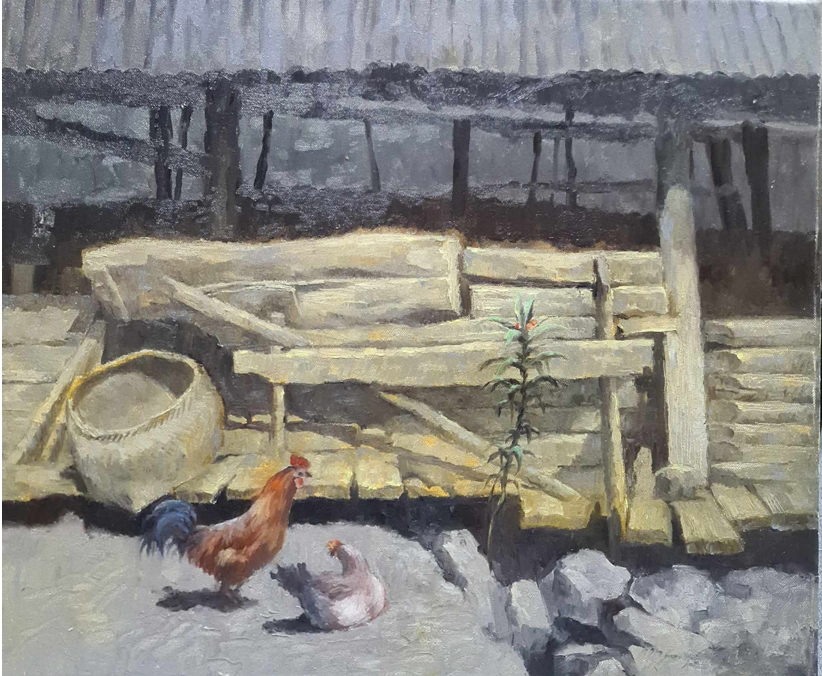The Mosaico: Italian Code of a Timeless Art multimedia exhibition is currently on display at the Vietnam Museum of Ethnology. This exhibition, organized by Magister Art, in collaboration with the Italian Ministry of Foreign Affairs and International Cooperation and the Italian Embassy in Hanoi, aims to introduce traditional Italian art to Asian countries. Visitors can explore the exhibition until April 7 at the Vietnam Museum of Ethnology, located at 1 Nguyen Van Huyen Street, Hanoi.
The exhibition takes visitors on a journey through 2000 years of Italian mosaic art. It showcases the images, symbols, techniques, and materials used in some of the most famous and iconic Italian mosaics. Through an immersive multimedia experience, visitors will have the opportunity to admire the stunning mosaics from Rome, Pompeii, Aquileia, Ravenna, Palermo/Monreale, Piazza Armerina, and Baia.
The exhibition is divided into six zones, each representing a different region of Italy.
| One of the showcased artworks at the exhibition. Photo: Ngo Minh/The Hanoi Times |
Zone 1 focuses on Rome and Pompeii, with the Rome section highlighting the capital’s rich history and centuries-long urbanization process. It also showcases mosaic art with Christian influences, seen in the murals found in basilicas. Pompeii features an exceptional tile work depicting Alexander the Great in confrontation with the powerful Persian Empire.
Zone 2 is dedicated to Aquileia and showcases the famous mosaic on the floor of the Basilica of St. Mary’s Assumption, which depicts the historical moment when Emperor Constantine decreed religious freedom.
Zone 3 highlights Ravenna and its exquisite paintings found in mausoleums and basilicas. These paintings are known for their vibrant colors and spiritual effects.
Zone 4 focuses on Palermo/Monreale, showcasing the majestic, breathtaking, harmonious, and multicultural aspects of the region through chapels and churches.
Zone 5 takes visitors to Piazza Armerina, where they can explore the rooms of the ancient Villa Romana del Casale and witness everyday moments of the Roman Empire during the first centuries after Christ.
Zone 6 tells the story of Baiae, an underwater archaeological area that was once a prosperous port but now lies at the bottom of the sea.
| The exhibition showcases the essence of Italian art. Photo: Ngo Minh/The Hanoi Times |
Ambassador Marco Della Seta highlighted the durability of mosaics, which are made using materials such as stone, glass, and shells. Some of the mosaics on display at the exhibition are 2,000 years old and still retain their original beauty. The technique of mosaic painting shares similarities with Vietnamese lacquer painting.
Visitors, like artist Cristina Gonzalez from Spain, appreciate the opportunity to learn more about mosaic techniques, symbols, and themes through the exhibition. Cristina specializes in oils and acrylics but has a keen interest in Vietnamese lacquer and spent nearly 4 years studying the craft. She found the exhibition particularly fascinating due to its similarities with the mosaic industry.
The art of mosaic originated in Mesopotamia during the 3rd millennium BC and later spread to various regions, reaching its zenith in ancient Greece and Rome (now Italy). In Vietnam, mosaic art can be seen in various forms, including the Ceramic Road that celebrates the 1000th anniversary of Thang Long-Hanoi, ceramic mosaic murals in Khai Dinh Tomb in Hue City, and the Chuon Ngo mother-of-pearl mosaic craft village in Phu Xuyen, Hanoi.





